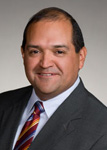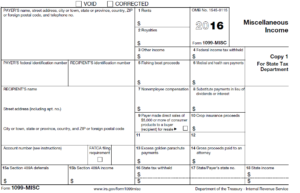By Mark Wiletsky
To implement President Obama’s September 2015 Executive Order, the U.S. Department of Labor (DOL) recently issued its final rule requiring certain federal contractors to provide up to seven days of paid sick leave per year to employees who work on covered contracts. Here are the essential requirements for contractors under this new rule.
Which Contractors and Employees Are Covered?
The final rule applies to new contracts with the federal government resulting from a solicitation that was issued, or contract that was awarded, on or after January 1, 2017. It includes contracts that are covered by the Davis-Bacon Act, the Service Contract Act, concessions contracts, and service contracts in connection with federal property or lands.
Not all employees of a federal contractor must be provided with this mandated paid sick time. Instead, employees must be allowed to accrue and use paid sick leave only while working on or in connection with a covered contract. Employees who perform work duties that are necessary to the performance of a covered contract but who are not directly engaged in performing the specific work called for by the contract, and who spend less than 20 percent of their work time in a particular workweek performing work in connection with such contracts, are exempt from the rule’s accrual requirements.
What Amount of Paid Sick Time Must Be Provided?
Contractors must allow employees to accrue one hour of paid sick leave for every 30 hours worked on or in connection with a covered contract, up to a maximum of 56 hours per year. In order to calculate that accrual, contractors may use an estimate of time their employees work in connected with (rather than on) a covered contract as long as the estimate is reasonable and based on verifiable information. As for employees for whom contractors are not required by law to keep records of hours worked, such as exempt employees under the Fair Labor Standards Act, it may be assumed that such employees work 40 hours each week.
If a contractor prefers not to calculate accrual amounts, the contractor may elect to provide an employee with at least 56 hours of paid sick leave at the beginning of each accrual year.
What If A Contractor Already Provides Paid Sick Time Off?
A contractor’s existing paid time off (PTO) policy may fulfill the paid sick leave requirement as long as it provides employees with at least the same rights and benefits required under the final rule. In other words, if the contractor’s existing policy provides at least 56 hours of PTO that can be used for any purpose, the contractor does not have to provide separate paid sick leave, even if an employee chooses to use all of his or her PTO for vacation. However, if the contractor’s policy does not meet all of the requirements under the final rule, such as not permitting an employee to use paid time off for reasons related to domestic violence, sexual assault, or stalking, then the existing PTO policy would not comply. In such cases, the contractor would have to either amend its PTO policy to make it compliant, or separately provide paid sick leave for the additional purposes under the final rule.
How Does An Employee Use This Paid Sick Leave?
An employee may use paid sick leave in increments as little as one hour for absences resulting from any of the following:
- the employee’s medical condition, illness or injury (physical or mental)
- for the employee to obtain diagnosis, care, or preventive care from a health care provider for the above conditions
- caring for the employee’s child, parent, spouse, domestic partner, or another individual in a close relationship with the employee (by blood or affinity) who has a medical condition, illness or injury (physical or mental) or the need to obtain diagnosis, care, or preventive care for the same
- domestic violence, sexual assault, or stalking, that results in a medical condition, illness or injury (physical or mental), or causes the need to obtain additional counseling, seek relocation or assistance from a victim services organization, take legal action, or assist an individual in engaging in any of these activities.
An employee may request to use paid sick leave by a written or verbal request, at least seven calendar days in advance when the need for the leave is foreseeable. When not foreseeable, the request must be made as soon as is practicable. Contractors may limit the amount of paid sick leave that an employee uses only based on how much paid sick time the employee has available. Any denial of a request to use paid sick leave must be provided by the contractor to the employee in writing with an explanation of the denial. Operational need is not an acceptable reason to deny paid sick leave requests.
May Contractors Require Medical Certifications?
Contractors may require a medical certification only if the employee is absent for three or more consecutive full workdays. Contractors must inform employees that a medical certification will be required before he or she returns to work.
What About The Overlap With The FMLA?
Contractors must still comply fully with the federal Family and Medical Leave Act (FMLA) as well as state and local paid sick time laws. If an employee is eligible for time off under the FMLA, the contractor must meet FMLA requirements for notices and certifications, regardless of whether the employee is eligible to use accrued paid sick leave. The contractor may, however, run the paid sick leave concurrently with unpaid FMLA leave.
Must Unused Paid Sick Time Be Carried Over or Paid Out?
Contractors must carry over unused, accrued paid sick leave from one year to the next, but may limit the maximum amount of accrual at any point in time to 56 hours. Contractors are not required to pay employees for accrued, unused paid sick leave at the time of job separation, but keep in mind that state or local laws may mandate a different result if the organization uses PTO instead of sick time. However, if an employee has been rehired by the same contractor within 12 months after a job separation, the contractor must reinstate the employee’s accrued, unused paid sick leave, unless such amount was paid out upon separation.
Preparing For January 2017
Employers who expect to seek or renew federal contracts on or after January 1, 2017 should review their existing sick leave and/or PTO policies to determine what changes may be required in order to comply with the new rule. The DOL provides many additional resources to explain the final rule, including a Fact Sheet, Overview of the Final Rule, and Frequently Asked Questions. Given the potential impact on contractors’ policies and how they are administered, we recommend taking steps now to determine how best to comply.








 By
By 

 A Chief Nursing Officer (CNO) is alleged to have stated that a younger nurse could “dance around the older nurses.” Not hard to imagine that such a statement would raise the hackles of many nurses over age 40, but do comments like that mean that the hospital discriminated against one or more nurses on the basis of their age when the nurses were discharged or resigned? That is the question facing Montrose Memorial Hospital after the Equal Employment Opportunity Commission (EEOC) filed an age discrimination lawsuit against the Western Slope hospital last Friday.
A Chief Nursing Officer (CNO) is alleged to have stated that a younger nurse could “dance around the older nurses.” Not hard to imagine that such a statement would raise the hackles of many nurses over age 40, but do comments like that mean that the hospital discriminated against one or more nurses on the basis of their age when the nurses were discharged or resigned? That is the question facing Montrose Memorial Hospital after the Equal Employment Opportunity Commission (EEOC) filed an age discrimination lawsuit against the Western Slope hospital last Friday. By
By 